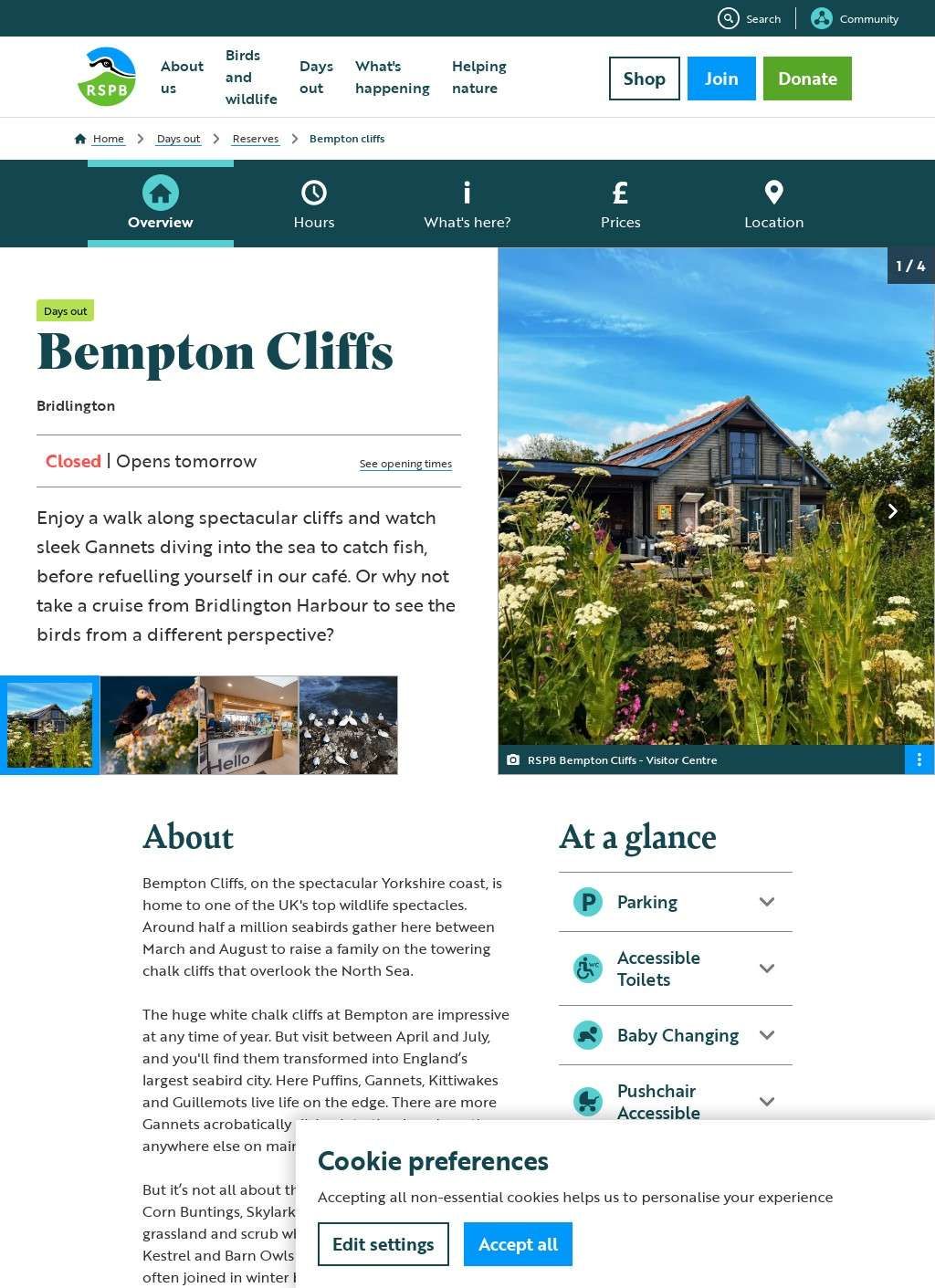RSPB Bempton Cliffs represents one of Britain's premier wildlife spectacles, where towering white chalk cliffs rising over 100 metres above the North Sea provide nesting sites for approximately half a million seabirds. Located on the Yorkshire coast near Bridlington, this nature reserve managed by the Royal Society for the Protection of Birds offers Europe's most accessible seabird colony, with safe viewing platforms positioned just a two-minute walk from the visitor centre. Between March and October, the cliffs transform into England's largest seabird city, hosting breeding populations of gannets, puffins, guillemots, razorbills, kittiwakes, fulmars, and shags in a cacophony of calls and constant aerial activity that creates an unforgettable wildlife experience.
The reserve's most famous residents are undoubtedly the puffins, whose colourful beaks and comical appearance make them visitor favourites. Unlike most UK puffin colonies where birds nest in burrows, Bempton's puffins utilise rock crevices in the chalk cliffs, making them somewhat harder to spot but rewarding patient observers. Best viewing occurs between April and mid-July, with the birds departing by early August. The puffin population faces increasing challenges from climate change, with warming seas affecting their primary food source, sand eels. These charismatic birds typically fly 25 miles east to the Dogger Bank to feed, demonstrating the interconnectedness of marine and terrestrial ecosystems that the RSPB works to protect.
Bempton hosts England's only mainland gannet colony, which has grown dramatically since the first pair nested in the 1960s to now number several thousand pairs. These magnificent birds, Britain's largest seabird with a six-foot wingspan, provide spectacular viewing as they plunge-dive from heights into the sea to catch fish. The gannets remain at Bempton later than other species, with some present until October. Watching these powerful fliers return to their precarious cliff-ledge nests, greeting mates with elaborate displays and carefully tending their single chicks, offers insights into seabird behaviour rarely available at such close quarters. The colony's success story demonstrates effective conservation management and the importance of protected sites.
The visitor experience at Bempton Cliffs extends far beyond simple wildlife watching. The modern visitor centre houses the Seabird Centre with interactive displays explaining the ecology and conservation of these remarkable birds. A well-stocked gift shop and café provide amenities, whilst knowledgeable staff and volunteers enhance visits with their expertise. Six safe viewing areas along three miles of cliff-top paths offer different perspectives, with three viewpoints fully accessible to wheelchairs and pushchairs. The reserve provides mobility scooters for hire, ensuring everyone can experience the spectacle. During summer, viewpoint volunteers equipped with telescopes help visitors locate and identify different species, sharing fascinating insights into seabird behaviour and conservation.
Beyond the breeding season, Bempton Cliffs remains significant for wildlife and visitors alike. Autumn brings migrant birds using the headland as first landfall after crossing the North Sea, with rare species occasionally appearing among common migrants. Winter transforms the landscape, with spectacular seas and occasional sightings of short-eared owls hunting the cliff-top grasslands. The site forms part of the larger Flamborough Head area covered by Flamborough Bird Observatory, contributing valuable data to understanding bird migration patterns. Marine mammals including seals, porpoises, and dolphins can be spotted from the cliffs, with whale sightings becoming increasingly frequent, adding another dimension to the wildlife watching opportunities.
Conservation work at Bempton Cliffs extends beyond protecting nesting seabirds. The chalk grassland habitat supports diverse plant communities including several orchid species, whilst management practices maintain optimal conditions for breeding corn buntings, tree sparrows, and linnets. The RSPB campaigns for marine protected areas recognising that healthy seabird populations depend on sustainable fish stocks. Educational programmes engage thousands of school children annually, fostering understanding of marine ecosystems and conservation needs. The reserve demonstrates how targeted conservation management can support thriving wildlife populations whilst providing exceptional visitor experiences, generating economic benefits for the local area through tourism.
Looking to the future, RSPB Bempton Cliffs faces challenges from climate change, marine pollution, and pressure on fish stocks, all affecting seabird populations. The reserve serves as a barometer for marine ecosystem health, with monitoring programmes tracking population trends and breeding success. Continued investment in facilities and interpretation ensures visitors understand not just the spectacle before them but also their role in protecting these remarkable birds. Through combining world-class wildlife viewing with conservation action and education, Bempton Cliffs exemplifies modern nature reserve management. The sight of thousands of seabirds wheeling against towering white cliffs remains one of Britain's great natural experiences, inspiring visitors to value and protect our marine heritage for future generations.
